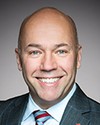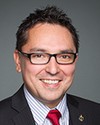The biggest challenge with Métis Nation is identifying Métis people and using health statistics for Métis. This was a self-reported, comprehensive survey done with Métis youth. It's very difficult to look at Métis statistics, compared to first nations status statistics. For similar non-status first nations, statistics are hard to find as well. We need to use household surveys and long-form census, for example, to have an understanding. Métis Nation B.C. and the other governing member organizations were funded through the chronic disease surveillance of the Public Health Agency of Canada.
We did a program study where we were able to show that in B.C., of our cohort, which was 1,400 individuals—all with an informed consent procedure—49% of the women were diagnosed clinically with depression. That was information provided by the ministry of health. We know there are similarities throughout the other governing member organizations under Métis National Council through their studies. As for having other statistics, we are not quite there yet. Definitely, the Métis Nation does not yet have the information required to show exactly what our needs are.




